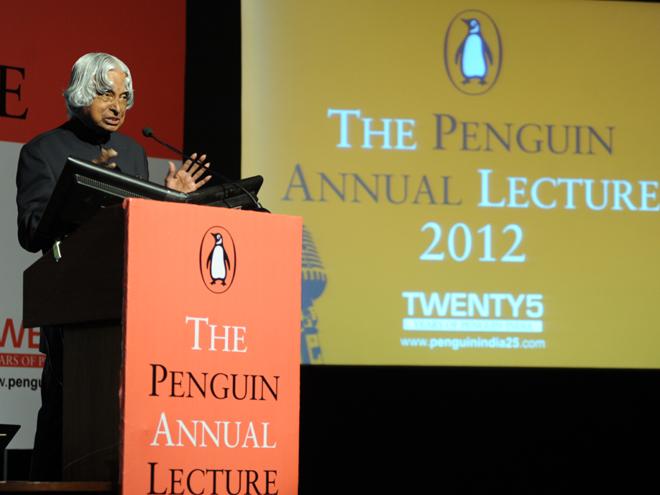New Delhi:
Former President-turned best-selling writer APJ Abdul Kalam uncovered a 10-point agenda for India beyond 2020 as a nation where the rural and urban divide will be reduced to a thin line, distribution of wealth will be equitable and education and value system will not be denied to people. The unveiling was performed on Tuesday.
The 10 commandments included “a responsive and transparent government”, “access to healthcare” and “sustainable growth”.
Outlining his vision of a shining India of the future at the Annual Penguin Lecture Series 2012, “Beyond 2020: Sustained Development Missions For the Nation”, Kalam said “sustainable development of the nation was the essence of India beyond 2012”.
Three aspects were the key to ensure sustainable development of the country, Kalam pointed out.
The nation needs “a steady economic growth of 9 per cent with minor variations of 1.5 per cent to 2 per cent”. The job profile of the future was “futhering of the technological nature of business and market aspirations” for sustainability that would provide continuous income and growth assurance in such a situation, the former president said.
“For millions of years, humanity has been taking more and more resources from the nature. Time has come to take less and less from nature to achieve sustainability, the formula for which is ‘a+b+c’. It will lead to well-being of the people and continuous growth,” he said.
The ex-missile man, who has been working on sustainable model for civic amenities in rural India under the project “Provision of Urban Amenities in Rural Areas (PURA)” since 2003, said it could improve the lot of 700 million people who live in 600,000 villages of India by developing systems that would “act as enablers” for inclusive growth.
He said “physical connectivity, knowledge connectivity and electronic connectivity” could bring “economic connectivity” to people in the rural areas by acting as broad enabling systems.
Kalam cited a new concept — user connectivity pyramid — to implement “integrated solutions needed for technologies and applications to be sustainable”. He said “Societal Development Radar” — another new apparatus that he was trying to give shape — could become a watchdog by “monitoring and reviewing the user connectivity pyramid”.
Explaining the nature of the user connectivity pyramid, the former president said it was built on “natural resources, info-communication, convergence of technology, societal business model, applications and at the bottom end, the users”.
He used Uttar Pradesh with its population of 100 million young people as a case study to explain his development model.
Lauding the role of publishing houses, the former President, who has authored books like the “India 2020: A Vision for the New Millennium”, “Ignited Minds” and “Turning Points: A Journey Through Challenges” said big publishers like Penguin could become partners in the country’s development success story by “presenting more researches and papers on the country’s success stories in the development in the form of books and e-books”.
source: http://www.pardaphash.com / Home> Education / by Vishal Srivastav / Tuesday, December 18th, 2012
